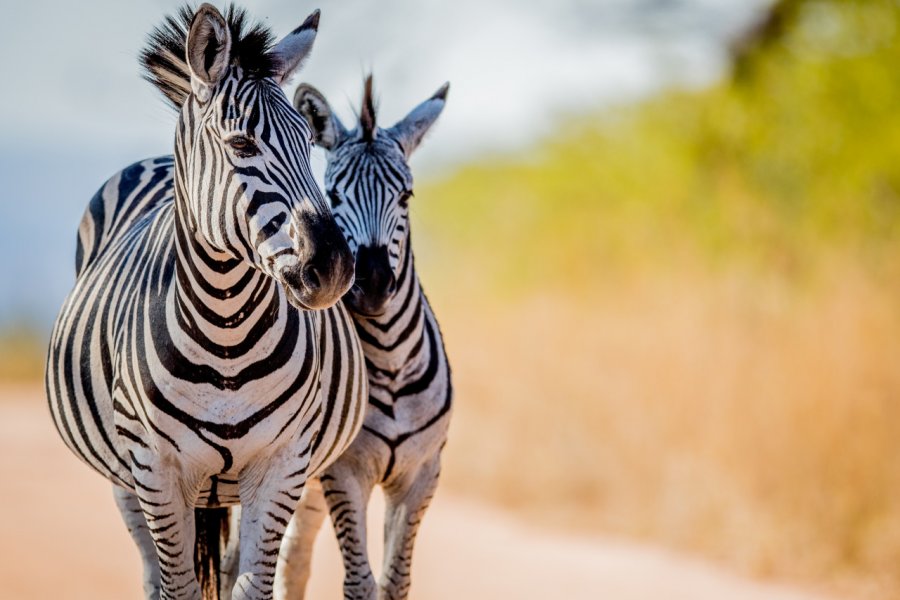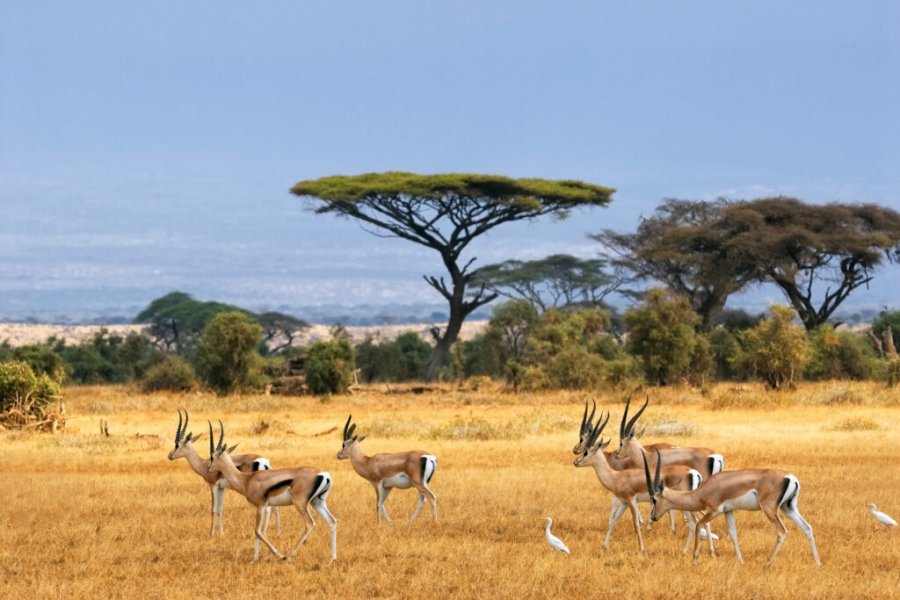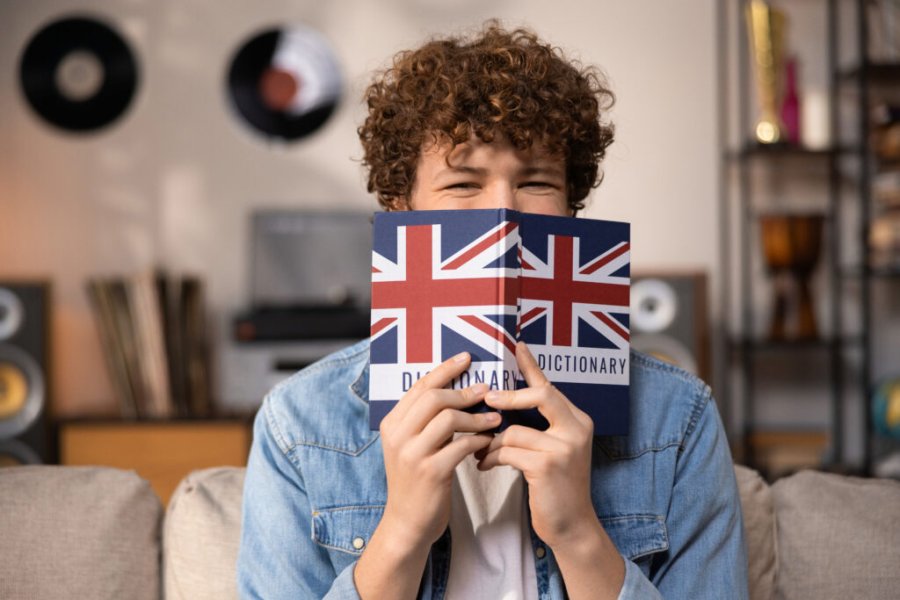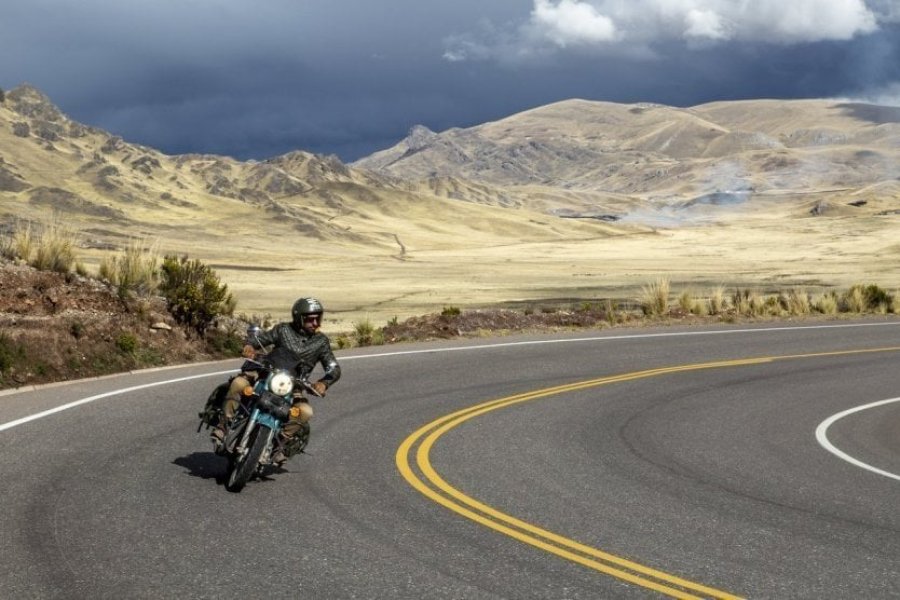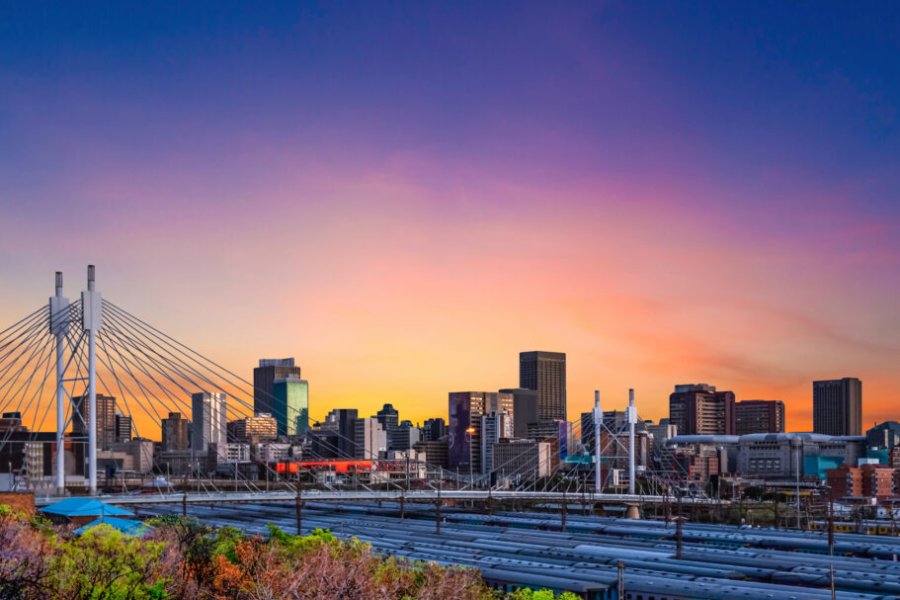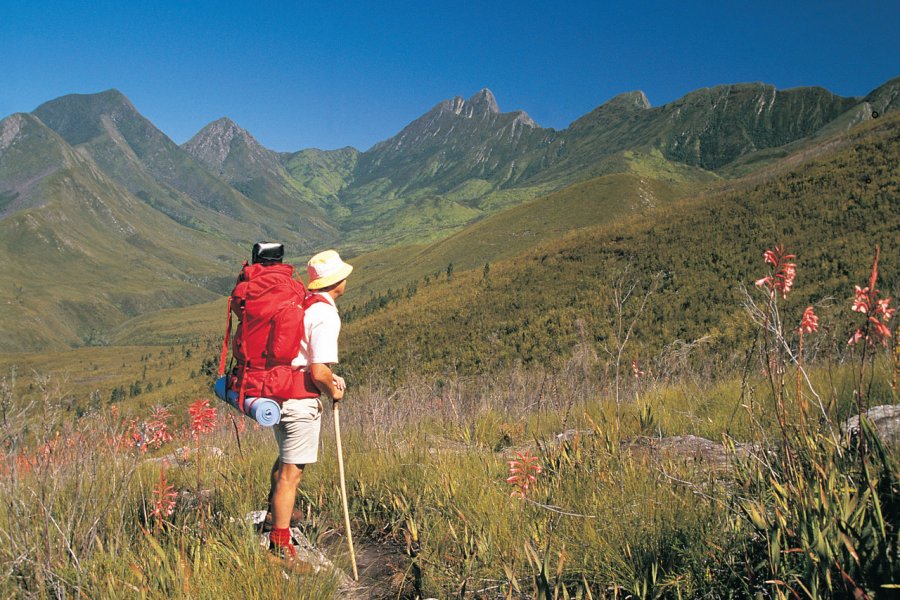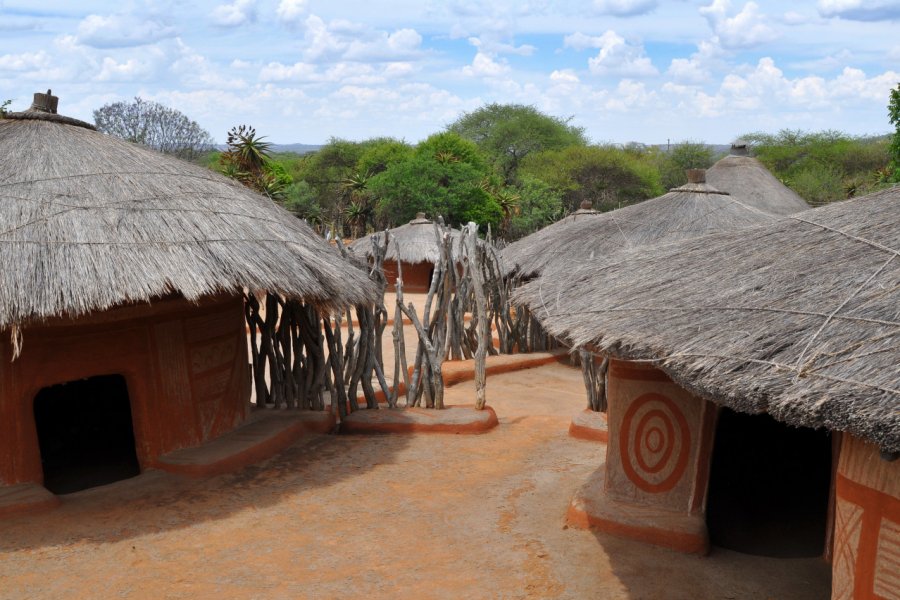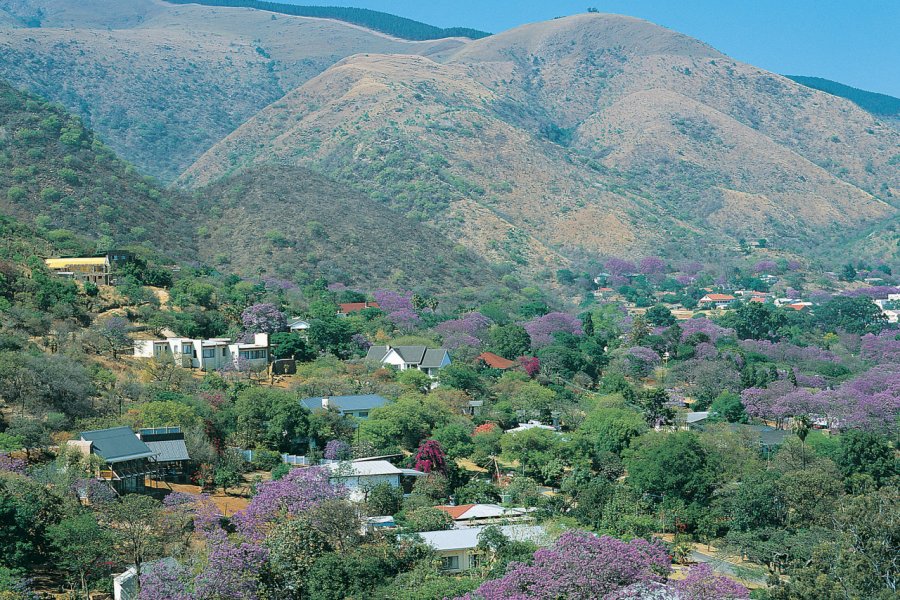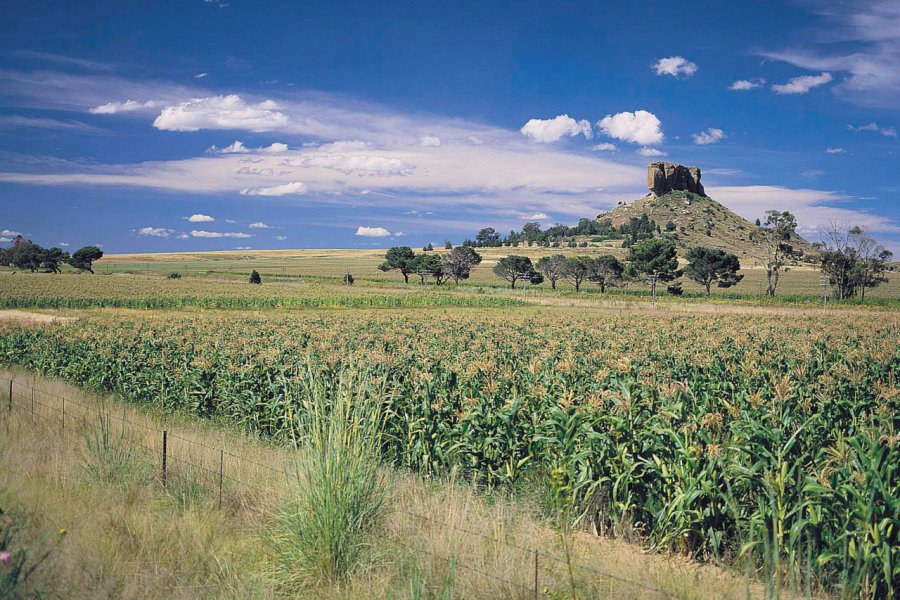Travel guide South Africa
South Africa is above all the magic of the bush and the country of the Big Five where you can make the safari of your dreams. Rhinos, elephants, leopards, lions and buffaloes, these are the 5 wild animals that all nature lovers dream of seeing and, with a little patience and perseverance, you will see them all in the famous Kruger Park. But by following the indications of a tour guide in South Africa, your fascination for this country will go far beyond... You will discover the fascinating history of the Rainbow Nation, long under the Apartheid regime, by going back in time to Soweto or Pretoria, without forgetting the ancestral traditions of Nelson Mandela's country, between the trances of Zulu witch doctors, and meetings with the Xhosa, Sotho and Swazi ethnic groups. A real change of scenery! Those who dream of beaches and relaxation will go to the Cape where they can also dive among sharks and canoe among whales. As for the trekking fans, they will find their happiness in the Drakensberg mountains for more sportive activities. It's hard not to fall under the spell of South Africa, whatever your travel desires!
What to see, what to do South Africa?
-
Book an activity
-
Customized travel
- The most beautiful cities South Africa
When to go South Africa ?
To know when to go to South Africa, you have to rely on the seasons, but the country is so big that the weather varies according to the regions!
November, December, January, February, March: it is summer in South Africa and the best time to go to the beaches of the Cape, the South, the Indian coasts and the Atlantic coast. Very hot in the Karoo and in the Kalahari. In Limpopo, Mpumalanga, Kwazulu-Natal, temperatures are tropical with thunderstorms in the late afternoon. The Drakensberg is often rainy at the end of the day, not ideal for hiking in the mountains. In Joburg, the weather is hot during the day and stormy in the evening.
April, May, June: it is autumn in South Africa. Rains decrease and temperatures rise in the tropical regions (Limpopo, Mpumalanga, Kwazulu-Natal). The weather is ideal in the Karoo, it is often sunny in Cape Town and better in the Kalahari. It is also a good time to go hiking in the mountains of Lesotho and Swaziland. And if you go to South Africa between April and June, don't miss the whale season on the Overberg coast.
June, July, August: winter is here and the tropical storms stop over Joburg, the cold sets in at night. July-August in South Africa are perfect for game viewing in the Mpumalanga, Kwazulu-Natal and Kruger reserves. Beautiful dry weather in the Karoo and Drakensberg, but very cold at night, with snow-capped peaks. It is the wrong season to go to Cape Town where it rains a lot. Good temperature in the Kalahari on the other hand.
September, October: it is spring! Namaqualand is flowery and the climate is temperate in Kwazulu-Natal. In Cape Town, on the Indian coast and in Pretoria it is the return of the good weather as well as in the provinces of Mpumalanga and Gauteng. It is the ideal time for mountain hikes in Swaziland, the Drakensberg and Lesotho, but the temperature drops at night.
Suggested addresses South Africa
Travel South Africa
-
Find a hotel
-
Car Rental
-
International e-SIM package
-
Find a local agency
Terre vaste et contrastée, l'Afrique du Sud propose autant de possibilités de séjours que de paysages. Au fil d'un voyage au pays de Mandela, on traverse le monde entier. Depuis la captivante Cape Town ou la fascinante Johannesburg, il faut d'abord appréhender la ville avant de s'en aller sur ses routes magnifiques. Les routes de la boucle nord filent jusqu'aux pistes du Parc National Kruger avant de regagner la côte est jusqu'à Kosi Bay ou Sainte Lucie, traversent ensuite la région du KwaZulu Natal pour se hisser vers les hauteurs du Drakensberg. Quelle diversité ! Les amateurs de plongée trouveront eux leur bonheur en faisant un crochet à Sodwana ou Umkomaas à la rencontre des requins blancs. Et de juin à octobre, le rendez-vous se fait sur la côte sud à la rencontre des baleines que l'on côtoie au fil de la Garden Route, avant de terminer le séjour en dégustant les vins locaux aux coeur des vignes de Stellenbosch !
Find unique Stay Offers with our Partners
How to go South Africa
How to go alone
You will mainly travel to South Africa by plane. Johannesburg's OR Tambo Airport is the largest in Africa. Every day, many national and international flights take off and land there. To obtain attractive rates, it is essential to do so well in advance. Remember to buy your plane tickets six months before departure.
How to go on a tour
Many tour operators offer tours in South Africa but, due to the large size of the country, you will not be able to discover it in one go. The proposed tours, of 15 days on average, cover the main regions and themes: discovery of the wildlife in the Kruger Park, a seaside stay in Cape Town or in Durban, a stay in the footsteps of Mandela from Soweto to Robben Island... Good to know: self-drive tours are preferred and bus journeys can be quite long.
How to get around
South Africa is served by many domestic flights but the prices are rather high. Transportation by boat is rather rare, except for the maritime links between Cape Town and Durban or Port Elizabeth and Durban. However, roads are generally good and well developed throughout the country. We therefore recommend renting a car or taking the long-distance buses, which are rather cheap and serve most major cities.
Featured articles South Africa
Discover South Africa
From the desert to the sugar cane plantations, from the beaches of the Indian Ocean to the cliffs of the Cape, South Africa covers no less than 1,219,090 km2. The country has a great diversity of landscapes and climates while presenting a relatively simple relief. Its V-shaped coastline marks the great southern border of Africa and extends from Mozambique on the Indian Ocean side to Namibia on the Atlantic Ocean side. In all, there are no less than nine ecosystems that coexist in South Africa, offering completely different landscapes. While crossing the regions, one can pass from vast expanses of stones and sand to forests of eucalyptus or pine trees bordering the ocean. From small villages frozen in time to vibrant megacities with the look of American cities, we cross the country from the bush to the ocean, passing by superb mountain ranges or vineyards as far as the eye can see. Superb!
Pictures and images South Africa
The 12 keywords South Africa
1. "Big Five"

Elephant, lion, rhino, buffalo and leopard make up the famous Big Five. Often among the most difficult animals to see on safari, they are also the most dangerous to hunt. Now protected, they live in national parks such as the Kruger and the country's private reserves, in the heart of magnificent landscapes.
2. Biltong

The South African specialty that dates back to the time of the Great Trek. At that time, the Boers, who had to conquer distant lands, set out on the great plains. Meat that was not eaten immediately was cut into thin strips and left to dry on the tarpaulins of the wagons. Today, the biltong is served as a snack, as an aperitif. We love it!
3. Biodiversity
The country surprises by the diversity of plant species, thanks to a climate that varies greatly from one region to another. But the prize goes to Cape Town. Protected in the depths of an environment classified as a Unesco heritage site, the region enjoys a Mediterranean climate where an ecosystem called fynbos reigns: 9,000 species of plants, half of them endemic.
4. Braai
Braai is sacred in South Africa! White, black, mestizo or Indian, everyone is hooked on the barbecue. Erected as a religion, the braai will never be electric. It's home to a variety of meats: boer sausages, beef steaks, ostrich steaks and kudu steaks, all served with plenty of beer.
5. Multiethnic
South Africa has no less than eleven spoken languages, as many different ethnic groups with very strong tribal and European traditions. Apartheid is over, but everyone lives together without mixing, because of the cultural gap. The new generation seems to be a little more mixed, on the campuses and in the new neighbourhoods.
6. Rainbow Nation
The expression "rainbow nation" was coined by Archbishop Desmond Tutu to represent the range of South African nations at the end of apartheid. A metaphorical way of thinking about the cohabitation of groups, juxtaposed in tolerance. The image of colours that do not mix and of inequalities that remain was criticised.
7. Rooibos

In Afrikaans, rooibos means red bush. It is often called red tea, but it does not contain any theine and can be consumed as an herbal tea without any problem. On the contrary, rooibos has many medicinal virtues against insomnia, but also asthma, allergies, constipation... You will find it in all its forms.
8. Wine route

The wine route was launched in Stellenbosch in the 1970s. Now adopted by other Western Cape wine regions, such as Paarl and Franschhoek, it is a mecca for tourists. Nestled between mountainsides covered with flowers on one side and vineyards on the other, the road is splendid. Along the landscape, you can taste.
9. Sangoma
Sangoma and other healers with magical powers are part of the Zulu, Xhosa and Swazi universe, and are considered to be indispensable interlocutors. The 200,000 traditional "doctors" in South Africa are consulted primarily by 80% of the black population, who are wary of modern medicine. They even have health insurance!
10. Shebeens
Shebeens are to black South Africans what pubs are to the English, taverns to the Bavarians and bars to the French. The name would mean "unauthorized drinking establishment". At one time, "white" liquor was forbidden to blacks. In the townships, underground bars were born. Today, they are the place to be.
11. Townships
Soweto in Johannesburg and Khayelitsha in Cape Town: these two names are the best known, but hundreds of townships exist on the outskirts of the cities. These neighborhoods stretch for miles. Small colored houses built by the government are trying to replace the endless fields of tin shacks.
12. Ubuntu
In Bantu parlance,ubuntu is considered a true humanistic and fraternal philosophy, one that fundamentally integrates the "other" into one's success and fulfillment. It is a fundamental concept in the philosophy of reconciliation developed by Desmond Tutu with the abolition of apartheid.
You are from here, if...
You consider braai a religion. A successful evening is a barbecue party with friends.
You accompany your meals with a good cold beer or a good local wine.
You meet around the traditional boma in the moonlight to remake the world.
You go to the shebeens to dance on hip-hop or kwaito beats.
You don't hang out alone in the streets at nightfall and opt for a cab or Uber ride home.
You support the local economy by buying responsibly.
You keep your best smile in all situations.
You get out of the water quickly when a black flag with a shark on it is raised on the beach and an alarm sounds.
You shout lekker! as soon as you find something great.
You are tempted by adventures and nature sports: from surfing to mountain biking to hiking.

